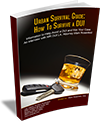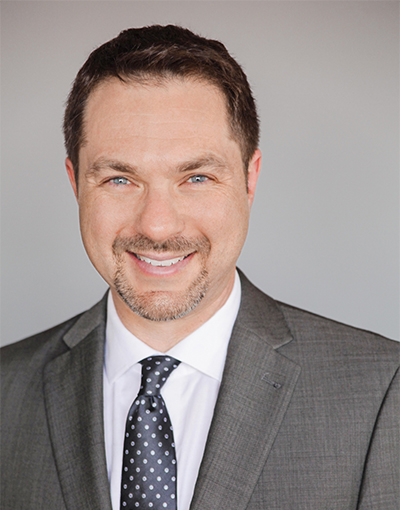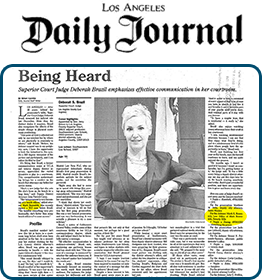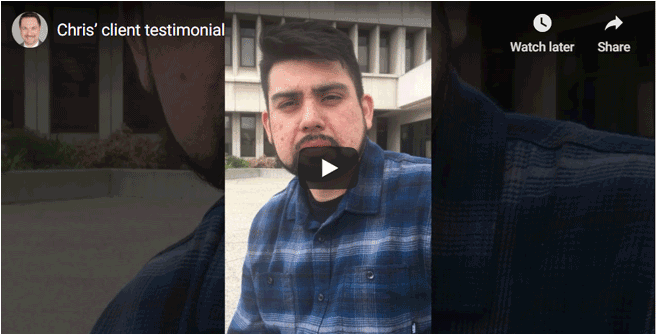By Mr. Rosenfeld:
Q: And how many check points were run in one year?
A: That year, I believe, it was 12.
Q: Once a month?
A: No, we didn’t schedule them once a month. Sometimes we do several in one month. There’s dedicated enforcement periods around the holidays and Labor Day where they want more check points.
Q: Do you know how many sheriff employees were working on June 28th of this year at this check point?
A: Well, there are several. We have two classes, but as far as total employees, deputy sheriff type, approximately 10.
Q: And everybody was paid for a full shift?
A: As far as I know, yes.
Q: And how long is the shift?
A: Some worked 10 hours from 6:00 to 4:00, others worked from 7:30 to 3:30, so between 10 and eight hours.
Q: And the deputies that were working were working overtime?
A: Yes.
Q: Do you know how many arrests were made at this particular check point?
A: For what charge?
Q: For any charge.
A: Not exactly, I think about 15 or 20, but I don’t know for sure.
Q: Do you know how many of those arrests were D.U.I. arrests?
A: I think it was two, but I’m not exactly sure.
Q: You’ve conducted over 100 D.U.I. check points in the Malibu area over the last 11 years?
A: Yes.
Q: Eleven years ago when you did a check point, how many D.U.I. arrests were made?
Mr. D.A.: Objection, relevance as to the check point issue in this case.
The Court: Sustained.
By Mr. Rosenfeld:
Q: In January of 2013, this year, did you run a check point?
Mr. D.A.: Objection, relevance.
The Court: Sustained.
By Mr. Rosenfeld:
Q: You testified that you looked at statistics, is that correct?
A: Yes.
Q: I’m sorry, the door shut.
A: Yes.
Q: What statistics did you look at?
A: As the Chief Law Enforcement for the City of Malibu, we collect all collision and citation reports for Pacific Coast Highway. It’s compiled in a data base called Crossroads. I utilize the Crossroads program to determine a number of D.U.I. collisions for that four-year period from 2009 through 2012.
The Court: For the period of 2009 to 2012?
Mr. Rosenfeld: Yes, your Honor.
The Witness: How do you mean prepare?
The Court: Did any of the information from the traffic accident collision related to D.U.I. and other citations that are in the Crossroads, did you have anything to do with those?
The Witness: No, my secretary enters that.
By Mr. Rosenfeld:
Q: On Carbon Canyon, is that how it’s pronounced?
A: Yes.
Q: You refer to as a corridor?
A: Pacific Coast is a corridor.
Q: And what are you referring when you say Carbon Canyon corridor, what area?
A: The area surrounding Carbon Canyon on Pacific Coast Highway, approximately 2 miles North and South of that location of the intersection of Carbon Canyon with Pacific Coast Highway.
Q: Within 2 miles south of that location, is there any signalized intersection?
A: Excuse me, I’m not exactly sure of the distance Las Flores and Rambla distance are near there and Big Rock, I couldn’t tell exact distance to intersection.
Q: Is Rambla distance signalized?
A: It’s kind of confusing, but it splits off Las Flores; part of the intersection is Las Flores and there is a “Y” that goes onto Rambla Vista.
The Court: Is that regulated by a traffic signal?
The Witness: Yes.
By Mr. Rosenfeld:
Q: Ramble Vista intersects with Pacific Coast Highway in two locations?
A: Correct.
Q: And one of those locations, you’re saying is a mile and a half south?
A: I’m not sure of the exact distance. I’m not sure.
Q: And then the other intersection with Pacific Coast Highway is right where the check point was, correct?
A: Carbon Canyon, correct.
Q: And that does not have a signal?
A: No, Carbon Canyon does have a signal as well.
Q: Okay. But Ramble Vista at PCH near Carbon Canyon does not have a signal, right?
A: The north end of Rambla Vista is what you’re referring to, and that does not have a signal.
Q: And how far is it north of carbon canyon to the next signal?
A: I don’t know exactly.
Q: You said that you chose this location because there was parking?
A: Yes.
Q: Where is there parking?
A: The width excuses me, the lane width is wide, and there is a large wide shoulder approaching the intersection, so that provides a significant space to do secondary investigation.
Q: There’s no parking lot?
A: No, we don’t use a parking lot there.
Q: And is Deputy Curry going to discuss lights?
Mr. D.A.: Calls for speculation.
The Court: I’ll sustain it.
By Mr. Rosenfeld:
Q: When you discuss who is going to testify about what, was Deputy Curry whose going to talk about the lighting or are you going to talk about lighting?
A: Deputy Curry.
Q: I could just ask you. What lights were there and what type of lighting was there at Carbon Canyon and PCH on June 28 of this year?
A: We provide a D.U.I. trailer that has lighting placed above it which lights the inspection area as well as the streets where the deputies contact the drivers. Additionally, there’s a generator with separate lighting along the highway so that the entire check point area illuminated.
Q: How many trailers were there?
A: Well, the D.U.I. trailer is the largest. The disaster communications that assist us with parking bring a trailer with a light mast.
The Court: With a what.
The Witness: Light mast.
By Mr. Rosenfeld:
Q: So how many trailers were there total?
A: Two.
Q: You testified that there were 26 traffic accidents related to D.U.I.?
A: Yes.
Q: In what period?
A: 2009 through 2012.
Q: What qualifies as something involving D.U.I.?
A: It would be a collision where the primary collision factor determined to be D.U.I.
Q: Is that any alcohol in the system?
A: It would have to rise to the level of being impaired.
Q: And where were those 26 accidents?
A: The corridor surrounding Carbon Canyon.
Q: Do you know specifically where they were?
A: Each one?
Q: Yeah.
A: No.
Q: You said that the line deputies that were screening cars were providing…was provided with a script?
A: Yes.
Q: Do you know where that script is?
A: It’s what I instructed them at the recheck point briefing, verbal.
The Court: It’s a verbal script, not a written script?
The Witness: Yes, Sir.
By Mr. Rosenfeld:
Q: You said that you gave them a script of what to say, and that the line deputies would then talk to people as they came through the check point?
A: Yes.
Q: And those officers are trained to look for certain signs that may mean that somebody is impaired?
A: Yes.
Q: Such as slurred speech?
A: Yes.
Q: And possibly red or watery eyes?
A: Yes.
Q: And the odor of alcohol?
A: Yes.
Q: And you said that the officers were to lean in, is that right?
A: Yes.
Q: So that’s to put their head inside the passenger compartment of the car?
A: Get as close to the driver as possible.
Q: You said that when you started the check point, that was at 7:30 P.M.?
A: Approximately, yes.
Q: And at that time, you had your line deputies stop every car?
A: Yes.
Q: And then you said that you had formula that there was a red house?
A: Yes.
Q: That’s not like an official term that’s literally a red house?
A: I use that as a reference point, correct.
The Court: In other words, there is a building red in color and when the traffic gets backed up to that point, you make some type of determination?
The Witness: Correct.
By Mr. Rosenfeld:
Q: And you said that’s about a 20-minute backup at that point?
A: Yes.
Q: And at that point, you use your radio and you tell the deputies to let all the cars through?
A: Yes.
Q: And then traffic clears and you go back to conducting the stop of every car?
A: Yes.
Q: Were the officers who are standing, the line deputies are standing, are there any overhead lights at that point?
A: Yes.
Q: And are those generator power lights?
A: Yes.
Q: And how many generators are there?
A: The main generator on our D.U.I. trailer has…Deputy Curry can describe them better. The lights are extremely powerful, and they’re used to light up several areas; however, there are several other generators. I don’t know the exact number attached to court lights along the rest of the officer’s initial inspection area.
Q: Is there a check point stopping traffic both directions?
A: Initially, we only stop the northbound. At approximately 11:00 P.M., we began stopping southbound cars.
Q: So after 11:00, you’re stopping both north and south?
A: Correct.
Q: Were you involved with creating the operational plan for this check point.
A: Yes.
Q: Do you have a copy of that?
A: Yes.
Mr. Rosenfeld: Your Honor, may I approach?
The Court: Yes.
Mr. Rosenfeld: I’d like to take a look at what documents you have.
By Mr. Rosenfeld:
Q: It looks like you have an envelope and some other papers in front of you. What is that?
A: Just the arrest report.
Q: May I take a look at that. And what are those?
A: This is the traffic collision report.
Q: So you have a document that’s two pages stapled together titled L.A. County Sheriff’s department, Lost Hills, and monthly traffic collision report, date range reported 11-2009 to 12-31-2012. You have another document that’s stamped together, appears to be seven pages titled settings for query. A second page appears to be a collision report summary. Is this what your assistant prepared for you?
A: Yes.
Q: There is some handwritten notation in here. Does this report say whether somebody was arrested?
A: It’s just a collision report.
Q: So if the collision report says that something the type of collision is a sideswipe with a parked motor vehicle, do you know if that person was arrested?
A: Could have been.
Q: Do you know?
A: No.
Q: What does P.C.F. stand for?
A: Primary collision factor.
Q: So if the P.C.F. is driving under the influence, how is that determined?
A: Whether or not they made an arrest or whether or not other witness testimony provided some type of information that it was a D.U.I. Arrest D.U.I. Offense.
Q: So when you say there’s 26 traffic collisions regarding D.U.I.s, that could be someone was arrested, right?
A: Yes.
Q: Or could be that someone called into 911 saying that there’s a drunk driver that sideswiped a car?
A: Right.
Q: A few years ago I was hit, hit-and-run, and I followed the guy but he wasn’t driving safe, and he got away. Was he a drunk driver?
Mr. D.A.: Objection, relevance.
The Court: Overruled. He can answer that on that set of facts.
The Witness: We wouldn’t be able to make a determination without seeing the driver.






 Personal Attention
Personal Attention Every criminal case is unique and no attorney can guarantee the outcome of a case. The information on this site is legal advertising and for general information only. Using this site, requesting books, information, consultations or communicating with Attorney Rosenfeld through its site does not form an attorney/client relationship.
Every criminal case is unique and no attorney can guarantee the outcome of a case. The information on this site is legal advertising and for general information only. Using this site, requesting books, information, consultations or communicating with Attorney Rosenfeld through its site does not form an attorney/client relationship.








